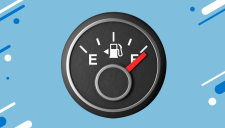What to do with your 1/3 lump sum RA payment

Published on 9th December, 2020 at 03:37 pm
When you retire and your retirement annuity (RA) matures, you can withdraw a maximum of 1/3 of it as a lump sum. Werner Vlok, business development manager at Glacier by Sanlam, discusses the options you have with this lump sum amount to secure your finances into retirement.
Does my RA actually mature?
A common misconception is that your RA ‘matures’ when you turn 55, but this isn’t strictly the case. Vlok explains: “An RA does not have a maximum retirement age, so you are not forced to retire from your RA. You can keep it until the day you decide to retire after the age of 55. You can even keep it after you’ve formally retired from your job. You don’t ever have to retire from an RA if you don’t want to.”
Naturally, there are benefits to leaving your RA to grow until you retire at, say, age 65. “It’s best to keep it saved as long as possible for the capital to grow, to supply you with an income for when you decide to retire,” adds Vlok.
Unsure how much you need to save to ensure you have an income for your retirement? Use this retirement calculator to find out.
The rule of thirds
RAs are governed by the Income Tax Act and the Pension Funds Act, and because you can enjoy tax breaks on your contributions, there are rules to adhere to. The rule applicable when retiring from the RA is that, subject to certain exceptions, you aren’t allowed to withdraw more than 1/3 of the total amount as a cash lump sum.
For example, if your RA’s total balance stands at R3 million, the maximum you’re allowed to withdraw any time after age 55 is R1 million (1/3). The remaining R2 million (2/3) needs to be reinvested into a retirement income product.
Worried about your investments? Speak to an expert financial planner who is best placed to advise you based on your personal portfolio, needs and risk. Click here to set up a meeting.
Want to know the key to successful retirement planning? Read this.
What to do with your 1/3 withdrawal
You could choose to reinvest the entire sum of your RA into a retirement income product, but Vlok notes that there are also advantages from a tax-savings perspective (depending on your marginal tax rate in retirement) to look at other options for where to invest your first R500 000 tax-free portion, or at least some of it. It’s important to remember that the principle of aggregation applies, and it would be wise to firstly determine the value of the remaining tax-free lump sum that is available to you. Utilising the full R500 000 tax-free allowance at retirement, if still available, will mean that the tax break is not available at your death for lump sums taken by your nominees.
“If you invest this portion in a discretionary investment, such as a unit trust investment plan, for example, although you’ll be liable for capital gains tax when selling units, you won’t pay income tax on any money withdrawn from this investment,” he explains. “However, you will pay income tax on the income drawn from a retirement income product such as an annuity.
“You’ll be exposed to market movements in a unit trust investment, whereas the portion in the retirement income product (if you’ve selected a life annuity) is protected from market volatility. So, there are choices to be made, which is why we always advocate getting proper advice. A qualified financial planner will look at your overall financial position, as well as your personal tax rate, and help structure your portfolio accordingly.” Book a meeting with one today.
At Glacier, retirees have the option to buy a life annuity as a voluntary purchase – in other words, take your 1/3 and buy a life annuity product with it. “This is designed with risk-averse clients in mind, and is also a tax-friendly option,” says Vlok. Here are 10 ways to save tax with a retirement annuity.
Options for your 2/3 reinvestment
The remaining 2/3 of your RA cannot stay in the RA and needs to be reinvested to secure your long-term income for retirement. This means there’s less flexibility than you would enjoy on your discretionary 1/3 withdrawal. You cannot touch this money, no matter your age, except for when you draw down your regular monthly income. “One usually plans for a term of 30 years,” says Vlok. “Together with your financial planner, you’ll need to decide on a retirement income product – these are mostly living annuities or life annuities. A combination of these products is also a very attractive option, as each product has its own strengths and weaknesses, and combining them should give you a better outcome over your retirement journey.”
With these, your drawdowns will be subject to tax according to the marginal tax table. “You get taxed on your monthly income as if it’s a salary,” says Vlok.
Struggling to decide between a living and life annuity? This read could help.
Is there a middle ground?
“It’s good to have money both in retirement income products, as well as in non-retirement products,” shares Vlok. Drawing from both of these means the tax burden of your retirement income product isn’t felt as harshly on your finances.
“Say, for instance, you’ve invested R2 million in a living annuity, and you start drawing an income of R20 000,” suggests Vlok. “That puts you in a specific tax bracket (a 26% marginal tax bracket).” If you lower your drawdown rate to as little as R12 000 and supplement that with non-taxable drawdowns from your discretionary investment, you draw less from your annuity, saving you income tax annually:
| Living annuity drawdowns | Discretionary investment drawdowns | |
|---|---|---|
| Taxed at 26% | Taxed at 0% | |
| Scenario 1 | R20 000 | R0 |
| Scenario 2 | R12 000 | R8 000 |
Deciding what to do can be quite complex and, therefore, we always advocate to talk to a qualified financial planner to assist you with these decisions,” he says.
Glacier Financial Solutions (Pty) Ltd and Sanlam Life Insurance Ltd are licensed financial services providers.
Approaching retirement and unsure what to do with your savings? A financial planner is the expert who can help you make a decision best suited to you. Book a meeting with one today.
Want to learn more?
We send out regular emails packed with useful advice, ideas and tips on everything from saving and investing to budgeting and tax. If you're a Sanlam Reality member and not receiving these emails, update your contact details now.
Update Now







